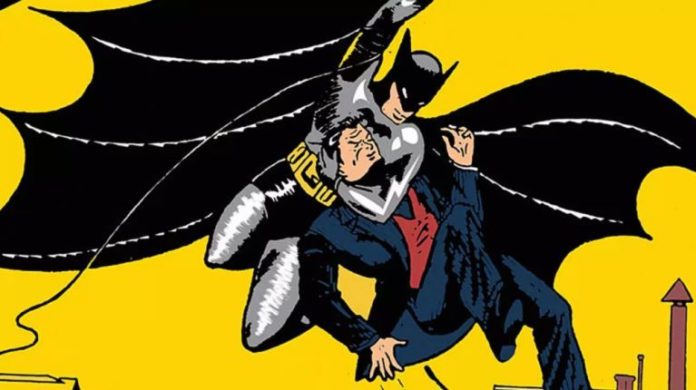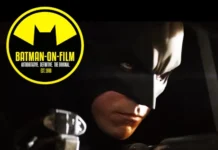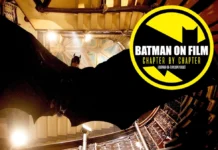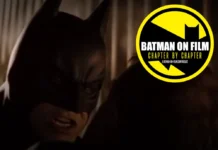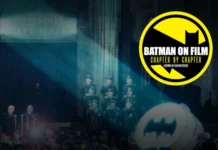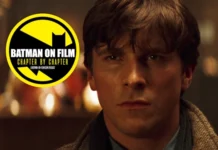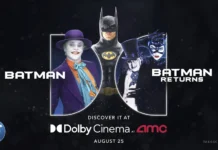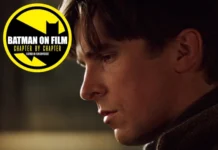Who Owns Batman?
Recently Scott Tobias of The Dissolve asked the question “Who Owns Star Wars?” He wasn’t asking the question in the literal sense of who owns the title, Disney owns that, but in the sense of the fact that all that Star Wars contains is either in conjunction with George Lucas’ vision or in knowing opposition to it. When you say “George Lucas’ Star Wars” it’s pretty synonymous with the cultural perception of Star Wars.
In many cases the answer to that question is obvious. Sherlock Holmes is obviously Sir Arthur Conan Doyle’s creation. Dracula is still Bram Stoker’s creation. However, with Frankenstein you’re more likely to conjure up visions of Boris Karloff than what Mary Shelley set down. With Iron Man, I’d argue that Robert Downey Jr. is the first thing that will come to mind. Sometimes it’s complicated.
Which brings us around to our favorite Dark Knight…
 Or Caped Crusader…
Or Caped Crusader…
Or one half of a Dynamic Duo…
Or Darknight Detective…
Or Weird Creature of the Night.
As you can tell, there are certainly competing visions all under the name of Batman. Sorting them out is the hard part and somewhat subjective.
To my mind, here are the main claimants for ownership:
“Bob Kane”
Adam West
Dennis O’Neil / Neal Adams
Steve Englehart / Marshall Rogers
Michael Uslan
Frank Miller
Tim Burton
Bruce Timm / Paul Dini
Christopher Nolan
Warner Bros. / DC Entertainment
The Fans
Let’s start the process of elimination and rank these various claims.
11) Warner Bros./DC Entertainment
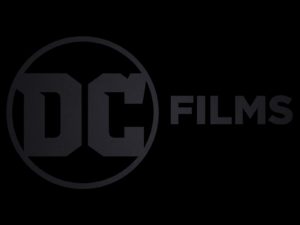 In a court of law, this is the right answer. But, unlike Marvel, the hand of Warner Bros. and DC Entertainment has been relatively light on the character, ceding authority to auteurs like Christopher Nolan and Tim Burton on the big screen and to creators like Bruce Timm and Paul Dini on the small screen. Grant Morrison and Scott Snyder have been driving Batman for the better part of a decade and seem to march to the beat of their own drummer. Warner Bros. ended up driving the franchise on the big screen off a cliff with BATMAN AND ROBIN (1997) and seem to have learned their lesson.
In a court of law, this is the right answer. But, unlike Marvel, the hand of Warner Bros. and DC Entertainment has been relatively light on the character, ceding authority to auteurs like Christopher Nolan and Tim Burton on the big screen and to creators like Bruce Timm and Paul Dini on the small screen. Grant Morrison and Scott Snyder have been driving Batman for the better part of a decade and seem to march to the beat of their own drummer. Warner Bros. ended up driving the franchise on the big screen off a cliff with BATMAN AND ROBIN (1997) and seem to have learned their lesson.
10) The Fans
I’ll say this for fans of Batman, they’re willing to flex their muscles and voice their opinions. They essentially vetoed the franchise from continuing in the wake of BATMAN AND ROBIN when box office numbers allowed for the possibility of continuing. They’ve talked the talk and walked the walk. They’re not lemmings. And that gives the fans some real power over the character and his direction.
Also, lobbying for Christian Bale as Batman likely had an impact.
Moreover, it’s hard to point to a time when fandom as a whole has shown forward thinking and vision. The controversy over the casting of Michael Keaton and Heath Ledger, two moves that turned out to be quite brilliant, shows a lack of imagination and vision. Fandom is good at looking backwards, but not so good at looking forward. In many ways, saying fandom owns Batman is saying that the tail wags the dog.
9) Michael Uslan
Michael Uslan has played an important part in getting Batman to the big screen with dividends being paid to this day. There’s a reason that his name is on every film. And his vision of the viability of big budget, dark, serious Batman films was truly forward thinking.

8) Steve Englehart / Marshall Rogers
Their run was short in the grand scheme of Batman, but it looms large. And there’s good reason for that it took all the elements that made up Batman previously, filtered them through their artistic vision, and came up with something that was both fresh and classic.
Marshall Rogers brought Gotham to gothic life like it never had been before. Rogers also found the sweet spot between cartoony Batman and realistic Batman that combined the strengths of both approaches. His vision of The Joker managed to swing between funny and scary on a moment’s notice. Englehart managed to take earlier stories of Batman and polish them into something fresh and modern. Moreover, they found the man inside the suit and gave him real conflicts and perhaps his first really adult relationship with a love interest. It’s not the only way to do Batman, but it’s a timeless model of how to do it right.

The hard part in assigning ownership to Englehart and Rogers is in deciding how much is distinctly their own vs. how much is just a smart combining of previous material. “The Laughing Fish/The Sign of the Joker” is both a terrific story and a reimagining of the Joker story in BATMAN #1. I can make a case that they should be #1 on this list, but separating them from the work of Bob Kane and company is where the difficulty lies.
7) Tim Burton
His vision of Batman may have been supplanted to an extent, but that vision is still with us in many ways. The technology may have evolved with time, but Christopher Nolan’s trilogy of Batman films still have black rubber suits, dark windowed vehicles, often with a cockpit that slides forward to open, and nods towards exaggerated architecture, like The Narrows. Not to mention a line like “I’m Batman.” The Batman symbol is certainly still iconic, owing largely to the marketing surrounding the 1989 movie. And the enormous success of that movie and resulting Batmania has convinced Warner Bros. to always be looking towards making another Batman movie, even during difficult periods.

If you had asked me “Who Owns Batman?” in 2003, Tim Burton would rank much higher on this list. But obviously Christopher Nolan came along, and while there were some holdouts, “The Dark Knight Trilogy” is the consensus better movies.
6) Dennis O’Neil/Neal Adams
Make no mistake, these two are enormously influential. In the aftermath of the 1960s Batmania, they reinvented Batman as a dark creature of the night with help from Frank Robbins, Irv Novick, and others. Moreover, Neal Adams created the ideal “realistic” version of Batman that’s been a heavy influence on generations of artists that have followed him. They brought back Two-Face, returned The Joker to his homicidal maniac ways, and introduced Ra’s al Ghul and Talia. Batman became a martial artist rather than a brawler and they balanced the gothic with the realistic.

None of the above should be considered any sort of knock on them. Adams’ still sets the realistic model for the character in comic books. It’s no coincidence that Ra’s al Ghul, The Joker, Two-Face, and Talia popped up in Christopher Nolan’s films. (Nor should the fact that Dennis O’Neil was group editor when Bane, “Knightfall,” and “No Man’s Land” were conceived be forgotten.) The only reason that they’re not higher is simply due to exposure. You can’t put their work together into a trade paperback that won’t jump around from story to story. Even the Ra’s al Ghul storyline reads like it’s a bit scattershot, and Neal Adams only worked on parts of it. There’s no THE LONG HALLOWEEN or even STRANGE APPARITIONS collection which shows the whole being more than the sum of the parts.
7) Adam West
For an enormous amount of people, Adam West is the first thing that leaps to mind when Batman is brought up. There hasn’t been a time since 1966 when his television series wasn’t being broadcast somewhere and it’s certainly still the first introduction to the character to many children. And with 120 episodes there’s true breadth to the world shown on that series. The series has embedded itself into our culture in a number of ways.
There’s also been a backlash. You can get away with “Holey rusted metal, Batman” in 1995’s BATMAN FOREVER as a one-off joke, but overall the preferred tone for Batman is dark and serious rather than bright and campy.
Still, when you see flames jetting out of the back of the Batmobile, that’s because of Adam West’s series. You see a turntable in the Batcave or THE DARK KNIGHT RISES’s Catwoman, Anne Hathaway, in a costume resembling Julie Newmar’s, and you can point right to the obvious influence. Heck, inadvertently or deliberately, direct comparison was made to “Somedays you just can’t get rid of a bomb” with THE DARK KNIGHT RISES. Unfortunately, we haven’t escaped the time when “Biff, bam, pow” doesn’t often lead off a headline about superheroes or comic books. It also solidly cemented in the public’s mind that the big 4 villains are The Joker, The Riddler, Catwoman, and The Penguin and it’s no coincidence that three of those characters prominently feature in GOTHAM. Or that there was fan speculation turning in the direction of The Penguin and The Riddler during Christopher Nolan’s run. The animated BATMAN: THE BRAVE AND THE BOLD obviously didn’t ignore the series either.
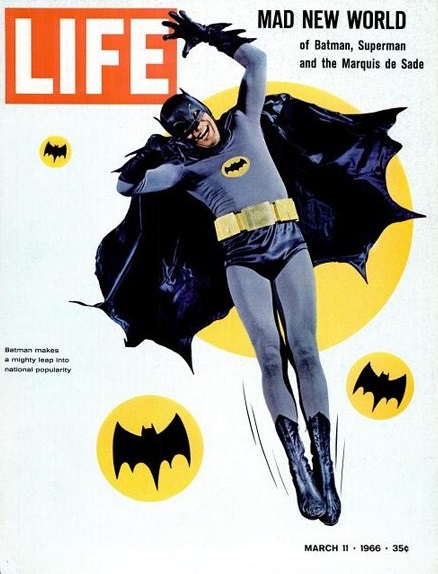
It doesn’t hurt that Adam West remains a charming personality. He’s spent the better part of 50 years as Batman basically, showing up at car shows, conventions, etc. and has left a positive impression. We can talk all we want about Batman as a dark, tortured yet heroic character, but Adam West supplies likability to the equation and has been about as good an ambassador for the character as you would want. There’s a store of goodwill for the character that Adam West is directly responsible for. And that goodwill has made it impossible for this incarnation to be forgotten.
4) Bruce Timm / Paul Dini
It’s tough to understate the importance of BATMAN: THE ANIMATED SERIES to Batman. It remains enormously popular, it has breadth, and it already has a legacy. When Kevin Conroy and Mark Hamill show up voicing enormously popular video games that only tells you part of that legacy. Heck, there’s a good bet to be made that Marvel Studios took a page out of the follow-up JUSTICE LEAGUE series when deciding on a shared universe as a direction.
When you talk about a Platonic ideal of what Batman is, BATMAN: THE ANIMATED SERIES is a good place to start. It updated classic stories, it covered the full gamut of story types, it fleshed out an enormous amount of characters, including versions of Mister Freeze and Poison Ivy who have become fairly standard, it’s dark yet fun for all ages.
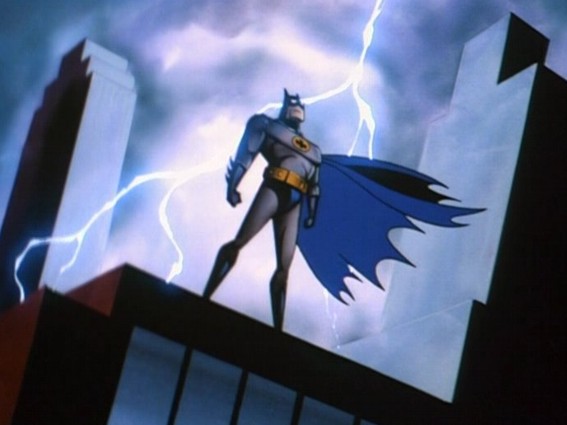
Frankly, I expect it to move up the list as kids who grew up on the show move into creative positions. The fact that Harley Quinn is poised to make her big screen debut in the near future (2016’s SUICIDE SQUAD) points that the series hasn’t stopped making its influence felt. If anything, it looks like it could rise closer to the top.
3) Christopher Nolan
Christopher Nolan made a terrific trilogy with two films making over a billion dollars at the global box office. He helped create a modern version of the Joker, with enormous credit to Heath Ledger, that’s one of the most acclaimed villains of the millennium and won the biggest awards Hollywood can bestow. Cinematically, this is the version that reigns number one in movie-goers minds currently.
That said, Christopher Nolan’s vision is so particular and specific, that it only captures part of Batman. Christopher Nolan told a story with a beginning, middle, and end and closed it off not leaving a lot of room for further adventures, officially or in the imagination of the fans. It’s an artistic statement for sure, but it also means that Nolan’s Batman will never include The Penguin, Mister Freeze, The Riddler, Dick Grayson, a gothic Arkham Asylum, Batgirl, etc. For better or worse, there’s no room for a shared universe in Christopher Nolan’s vision.
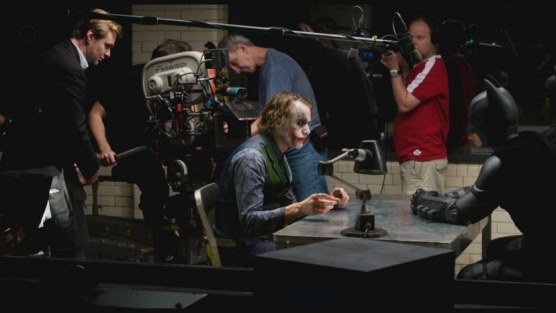
“The Dark Knight Trilogy” might be the cherry on top of all things Batman, but there’s a lot surrounding it that make up Batman. Sealing the films off from anything extraneous made the films themselves better, but also limited exactly how much of an encompassing vision it could be. I expect that while the movies will always be well respected, the influence of this particular vision on future Batman movies and stories is likely to be rather limited. Ask me again in 10 years and I think Christopher Nolan is going to rank lower on the list.
2) Frank Miller
It’s kind of amazing that Frank Miller only wrote two major Batman stories that are really acclaimed. That tells you a lot about how great those stories are. BATMAN: YEAR ONE and BATMAN: THE DARK KNIGHT RETURNS represent the alpha and omega of Batman and have been well mined for content over the years, but they also have been a springboard for talented individuals to go in their own direction.
Part of what makes them influential is that they allow a lot of room to play in between them. Miller alludes to the middle of Batman’s career, but he also allows for people to define that in their own way. The two stories are also vastly different in style. YEAR ONE is grounded, realistic, and low key. THE DARK KNIGHT RETURNS is big, satirical, and operatic. You can fit ranges of stories and styles in between those two without violating either. You can carry threads forward, Miller created Carmine “The Roman” Falcone who ended up playing big roles in THE LONG HALLOWEEN, BATMAN BEGINS and GOTHAM and fill in backstory, the death of Jason Todd is immediately attributable to THE DARK KNIGHT RETURNS.

It’s hard to get away from Frank Miller at this point. You can spot his influence on BATMAN: THE ANIMATED SERIES, the lightning bolt illuminating Batman in the opening credits is just one such influence, it’s present in Tim Burton’s BATMAN, particularly with the armor and military weaponry, and it’s present in Christopher Nolan’s “Dark Knight Trilogy.” And, already, you can see that it’s going to be an influence on BATMAN V SUPERMAN. Almost all of the comic book runs since 1986 can be seen as a continuation of or a reaction to Frank Miller’s two seminal stories.
Frank Miller could easily still be number 1 on this list.
1) “Bob Kane”
“Bob Kane” is in quotes as it’s hard to attribute exactly what was created by the folks that were working on Batman during his tenure controlling the character up to the mid-sixties. Bill Finger, Jerry Robinson, Dick Sprang, Sheldon Moldoff, and a whole slew of others all made monumental contributions to the character. Obviously, they had the benefit of being first and working on Batman for decades, but the character also didn’t get a reboot like The Flash or Green Lantern in the Silver Age. Heck, Wolverine has been fleshed out a lot more than Len Wein’s original conception.
What’s amazing is how much those early stories are still vital. Many origins, including Batman’s, get reworked to keep them vital, sometimes not changing the plot points as much as the character’s motivation, but Batman’s origin and motivation are rock solid. Sure, someone may graft on a detail, like Martha Wayne’s pearl necklace breaking as a metaphor for a shattered life, but the central idea remains the same. Ask me if Superman does what he does out of pure altruism, it’s his destiny, or to connect with the regular population and it will change, or what’s Superman’s relationship with Earth and Krypton, and it will be a much more complicated answer which will amount to “it depends”.

Certainly that core has been improved upon, substantially to be sure, but it’s also true that nobody has really reinvented the wheel as far as Batman goes. He’s a dark character, sometimes teamed with the lighter Robin, who battles crazy, colorful human criminals with a combination of physical prowess and keen intellect. He’s not a revolutionary, even if Frank Miller suggested he might become one. He’s not sporting an Iron Man like suit consistently. He and the supernatural cross paths only occasionally. He doesn’t slip into anonymity easily and remains a symbol. His vigilantism has limits.
That’s been true for most of the last 75 years. It won’t necessarily apply to the next 75 as the 21st century undergoes its own upheavals. Could his mission change from criminals interested in robbing banks to battling the corrupt elite? Or more towards political corruption? Will video games come to dominate how we view the character? We’ll have to see. But, for the immediate future, he’s still very recognizable as the character that Bob Kane and Bill Finger dreamed up in 1939. – Robert Reineke

